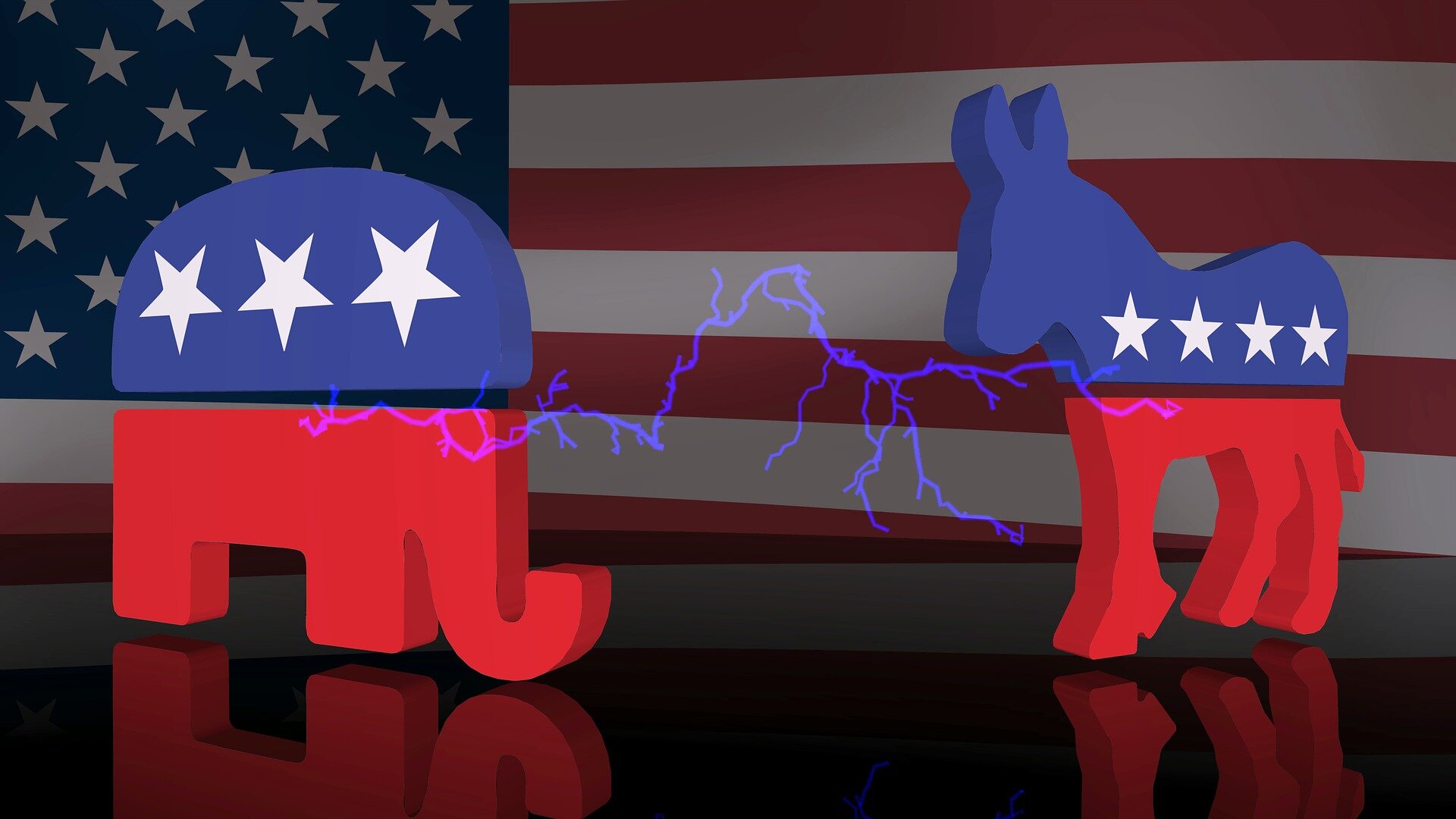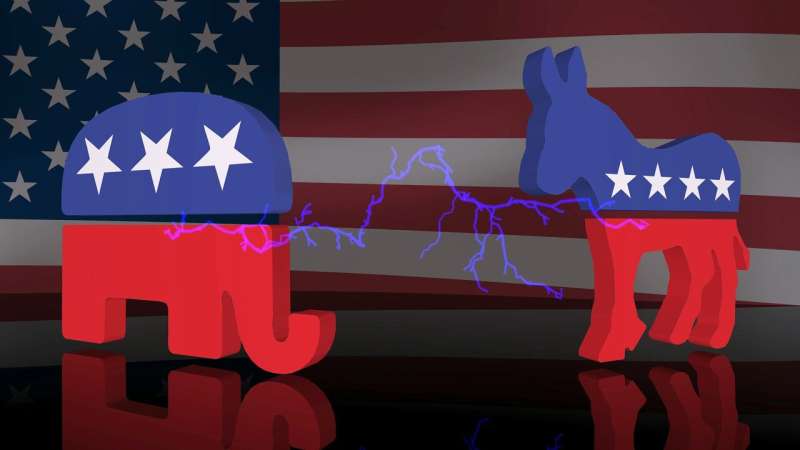

After weeks of tense speculation over a looming financial catastrophe, should the U.S. default on its debts, House Majority Leader Kevin McCarthy and President Biden are finalizing terms for a bipartisan agreement to raise the debt ceiling. While it is clear that a bipartisan deal is necessary for legislative action during divided government, it is less clear whether bipartisanship is similarly useful for individual legislators.
Despite arguments that Congress is dominated by partisan interests, a new study finds that legislators who draw in co-sponsors from both sides of the aisle are more effective lawmakers.
Political scientists from Northwestern University, University of Virginia and Vanderbilt University have analyzed more than 40 years of congressional data to determine whether effective legislators more frequently adopt a bipartisan or partisan approach to reaching their policy goals.
Their study, “The Bipartisan Path to Effective Lawmaking,” was published earlier this month in the Journal of Politics.
The researchers found that for both members of the House and Senate, legislative effectiveness is heightened when members build bipartisan coalitions around the bills they sponsor. This pattern holds over time and for both majority and minority legislators.
The study is the first to take an individual- versus aggregate-level look at lawmakers’ efforts to build a coalition around their bills and how it relates to their effectiveness in achieving policy goals.
“Our argument and findings are particularly novel because they point to the value of bipartisanship even in a highly polarized Congress where partisan conflict often seems the norm,” said one of the study’s authors Laurel Harbridge-Yong.
Harbridge-Yong is an associate professor of political science and a faculty fellow of the Institute for Policy Research at Northwestern.
Examining the relationship between bipartisanship and effectiveness, the study found that building bipartisan coalitions on the bills a member sponsors is positively associated with her legislative effectiveness score.
Data between 1973 (to coincide with the beginning of the modern Congress) and 2016 (when the research project began) was reviewed to assess whether the value of bipartisanship has declined over time.
Findings showed that even as polarization in Congress has risen, bipartisanship is associated with increased effectiveness for both majority and minority party members.
“In the context of a political climate where bipartisanship and compromise seem like harmful traits in primary elections, or when high-profile initiatives reflect the majority party steamrolling the minority, these are surprising findings that point to the continued value of bipartisanship,” Harbridge-Yong said.
Examples of legislators who scored high on the bipartisan metric included senators Lisa Murkowski (R-AK) and the late John McCain (R-AZ). In the 113th Congress, Sen. Murkowski introduced 43 public bills, 33 of which drew co-sponsors. In the 107th Congress, Sen. McCain introduced 45 bills and 31 drew co-sponsors. The average Proportion of Bipartisan Co-sponsors Attracted for these bills was a striking 0.85 for Murkowski and 0.67 for McCain. Both had high legislative effectiveness scores compared to similarly positioned members.
Legislators who scored low on the bipartisan metric included former senators Rick Santorum (R-PA) in the 105th Congress and Barbara Mikulski (D-MD) in the 114th Congress. Their average Proportion(s) of Bipartisan Co-sponsors Attracted were 0.03 and 0.14 respectively. Both of these legislators had low legislative effectiveness scores.
Implications
“Legislators who want to run for re-election on a record of legislative success, or leave a legacy of shaping successful policies, should value building bipartisan coalitions,” Harbridge-Yong said. “However, it may be the case that not all legislators value legislative success. For some legislators, particularly conservatives who seek to cut spending or limit the size of government, inaction can be beneficial in a way that it is not for most other members of the chamber.”
The study found that reciprocal relationships were key to increasing bipartisan support and legislative effectiveness. The researchers say that legislators who contribute to bipartisan coalitions by joining as a co-sponsor on bills sponsored by members of the opposing party have higher rates of bipartisanship on the bills they sponsor.
The study’s co-authors are Craig Volden, professor of public policy and politics at University of Virginia, and Alan E. Wiseman, chair of the political science department and Cornelius Vanderbilt Professor of Political Science and Law at Vanderbilt University. Volden and Wiseman are co-directors of the Center for Effective Lawmaking, the source of congressional data used in the study.
“In today’s closely divided and highly polarized political climate, partisan all-or-nothing policy proposals cannot solve the nation’s pressing policy problems,” Volden said. “Lawmakers who recognize this, and do the hard work to form broader coalitions, have been finding much greater success. They offer a blueprint for constructive lawmaking to address the toughest policy challenges.”
“This study complements recently published research that demonstrate that those U.S. Representatives who are more effective lawmakers generally fare better in their primary elections than less effective lawmakers, Wiseman said. “In combination with the findings of the current study, our most recent article establishes a connection between how legislating in a bipartisan manner can contribute to greater lawmaking effectiveness, which, in turn, can pay off electorally for incumbent members of Congress.”
How the study was done
To measure the extent of legislators’ bipartisan coalition building, the researchers leveraged observational data about members’ sponsorship and co-sponsorship patterns in the House and Senate; members’ ability to draw in a bipartisan coalition of supporters on bills they have sponsored; and efforts to join bipartisan coalitions on bills sponsored by other members.
Legislative effectiveness was based on 15 indicators that collectively capture the proven ability of a legislator to advance her agenda items through the legislative process and into law. Indicators measure how many bills a member sponsors, how many received action in and beyond committee, how many passed the chamber, and how many became law. Greater weight is also given to bills with greater substantive significance.
To rule out other factors known to enhance legislators’ effectiveness, data on individuals holding committee chairs or having more seniority in the chamber were controlled for in the study.
More information:
Laurel Harbridge-Yong et al, The Bipartisan Path to Effective Lawmaking, The Journal of Politics (2023). DOI: 10.1086/723805
Provided by
Northwestern University
Citation:
New study quantifies the power of bipartisan coalitions (2023, May 31)
retrieved 31 May 2023
from https://phys.org/news/2023-05-quantifies-power-bipartisan-coalitions.html
This document is subject to copyright. Apart from any fair dealing for the purpose of private study or research, no
part may be reproduced without the written permission. The content is provided for information purposes only.